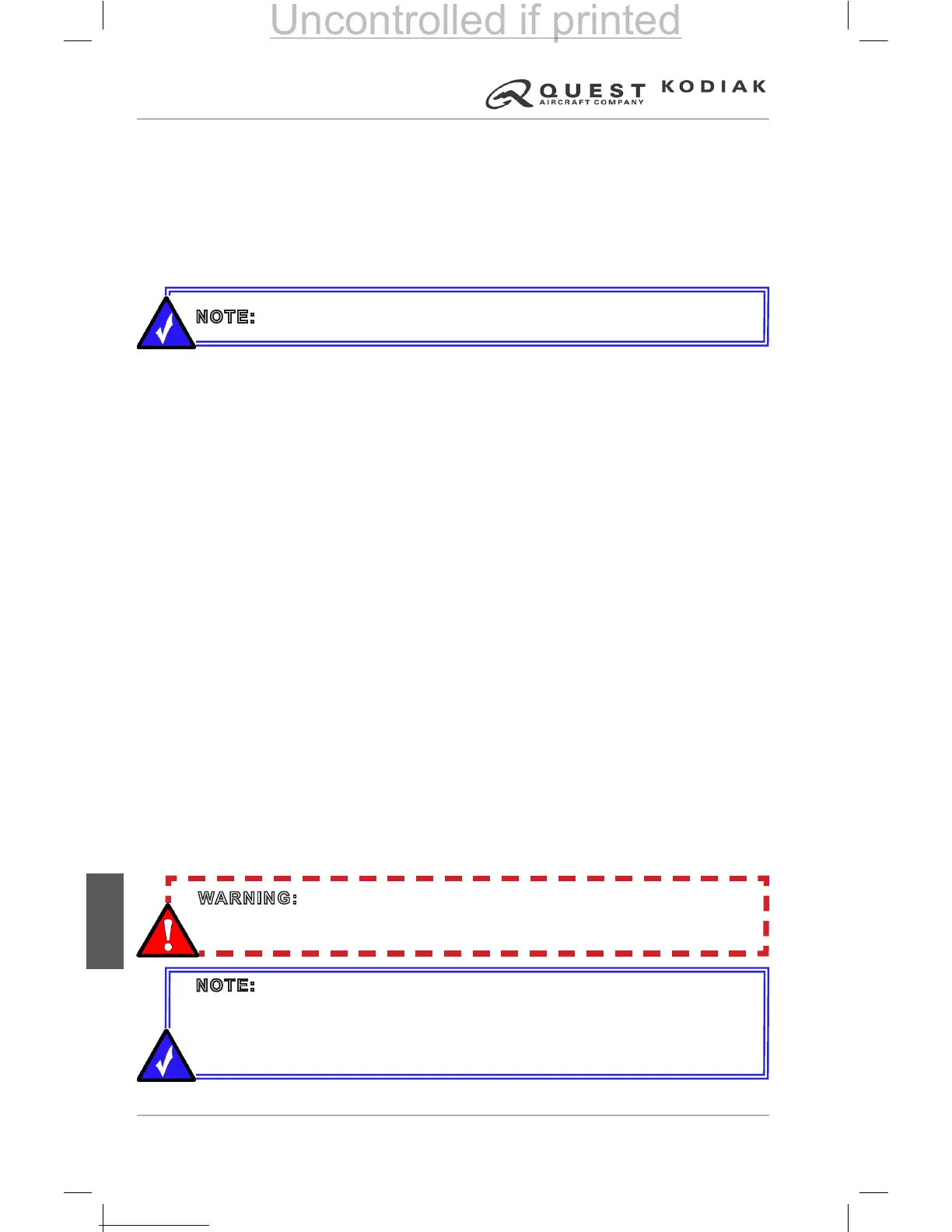TRAFFIC AVOIDANCE SYSTEMS
The KODIAK 100 is capable of displaying trafc advisories. Depending on
the conguration of the aircraft, the KODIAK is equipped with either Trafc
Information Service (TIS) or Trafc Advisory System (TAS). Each system
has annunciations that vary in denition and symbology. For operational
guidance of the trafc avoidance systems, refer to the Garmin G1000 Cockpit
Reference Guide (190-00645-XX).
Trafc Information Service (TIS)
Trafc Information Service (TIS) is designed to help in detection and
avoidance of other aircraft. TIS uses the Mode S transponder for the trafc
data link. TIS receives trafc information from ground stations, and is updated
every 5 seconds. The G1000 displays up to eight trafc targets within a 7.5-
nm radius, from 3000 feet below to 3500 feet above the requesting aircraft.
Trafc is displayed according to TCAS symbology.
Trafc Advisories (TA) alert the crew to intruding aircraft. When trafc meets
the advisory criteria for the TA, a solid yellow circle symbol is generated. A
TA which is detected but is outside the range of the map on which trafc is
displayed are indicated with a message in the lower left corner of the map.
TIS also provides a vector line showing the direction in which the trafc is
moving, to the nearest 45°. Trafc information for which TIS is unable to
determine the bearing (non-bearing trafc) is displayed in the center of the
Trafc Map Page or in a banner at the lower left corner of maps other than the
Trafc Map Page on which trafc can be displayed.
The altitude difference between the requesting aircraft and other intruder
aircraft is displayed above/below the trafc symbol in hundreds of feet. If the
other aircraft is above the requesting aircraft, the altitude separation appears
above the trafc symbol; if the other aircraft is below the requesting aircraft,
the altitude separation appears below the trafc symbol. Altitude trend is
displayed as an up/down arrow (for speeds greater than 500 fpm in either
direction) to the right of the target symbol. Trafc symbols for aircraft without
altitude reporting capability appear without altitude separation or climb/
descent information.
NOTE: TIS is disabled if a Trafc Advisory System (TAS) is installed.
NOTE: TIS is available only when the aircraft is within the service
volume of a TIS-capable terminal radar site. Aircraft without an operating
transponder are invisible to both Trafc Advisory Systems (TAS) and TIS.
Aircraft without altitude reporting capability are shown without altitude
separation data or climb descent indication.
WARNING: The Trafc Information Service (TIS) is intended for advisory
use only. TIS is intended to help the pilot locate trafc visually. It is the
responsibility of the pilot to see and maneuver to avoid trafc.
